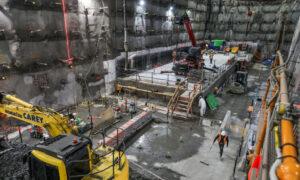Melbourne’s Third Runway Soars to New Heights
A third runway at Melbourne Airport has finally been approved, but the timeline for the rail connection to the site is still uncertain.
The federal government announced the confirmation of the $3 billion (US$2 billion) project on Sep. 13, with conditions to minimize the impact of aircraft noise on the surrounding communities.
Catherine King, the Transport Minister, stated that the new runway would help meet the growing city’s demands and improve access for freight and passengers.
“Throughout my review of this proposal, I have prioritized the needs of the local community,” she said in a statement.
The minister noted that the project comes with an extensive set of conditions, including noise abatement measures such as restoring the east-west runway’s length and implementing an airspace plan to manage aircraft noise distribution.
A noise reduction program for severely affected communities is mandated along with a health study to analyze noise impact pre and post the third runway’s construction.
Treasurer Tim Pallas expressed hope that both the runway and rail projects would be completed simultaneously, following the delay of the $10 billion (US$6.7 billion) rail line due to disagreements in design.
“There are challenges ahead, with the crucial third runway needing an airport rail link around the same time it opens,” he stated to reporters.
He acknowledged the past design disputes that caused delays but emphasized the importance of moving forward promptly.
In July, the government argued that an above-ground rail option would be quicker and cost-effective compared to the airport’s preference for an underground facility.
David Davis, the opposition energy spokesman, highlighted the ambiguous timeline of the airport rail amidst the third runway’s approval.
“The Victoria government has been in power for 10 years now, and yet the airport rail remains unresolved. This raises questions about the situation,” he remarked.
Melbourne Airport’s CEO, Lorie Argus, emphasized the project’s potential to generate jobs and boost the state’s economy by $6 billion (US$4 billion) annually across various sectors.
The new parallel runway system will enhance the airport’s capacity by enabling simultaneous take-offs and landings, reducing delays, and providing airlines with room for expansion.
Located 1.3 kilometers west of the existing runway, the third runway is set to open in 2031.





